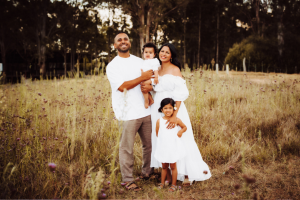Women face a myriad of financial issues during different phases of their lives. From marital status, through to employment status and even generational differences—each of these factors can affect a woman’s personal financial health.
An MLC Wealth Sentiment Survey (WSS) found that while Australian women have greater financial anxiety around retirement income shortfall, they also give less consideration than men towards forward planning.
The research found that 37% of women are giving very low consideration to potential future financial setbacks, compared to 29% of men (WSS Q2 2015). This is alarming. Whilst women have anxieties around retirement, many are still unsure of how to effectively plan for the future.
Financial fitness isn’t very different from physical fitness. We all know that if we decided to run a marathon, we need to make the time to plan, perhaps even engage the help of a personal trainer, nutritionist or physio and work up to feeling well prepared and ready to go. However, when it comes to financial fitness, we don’t always know what to do.
So, here are my top five tips on how to become financially fitter, and to see you running a financial marathon before you know it.
Understand your current financial situation
Many women will manage their household budget from groceries to school fees, but it’s often the other half who manages the investments and assets. It’s important that you understand your current financial situation—from your superannuation through to assets, investments and what insurance you have. The first step to being financially fit is finding the time to take an active interest in your financial situation, and understand where you currently stand, relative to the lifestyle you would like to have in the future and in retirement.
Seek advice
So this is where the personal trainer comes in. Once you have set your goals, you need someone with the expertise to help you understand what it will take to achieve them. This could be your accountant, an adviser available via your superannuation fund, or your bank. Make sure it is someone you connect with and that they charge you a fee for service (i.e. rather than product commissions). You want to be starting a long-term relationship with this person.
Chunk it down
With your adviser, break down all the areas within your finances and tackle each one separately. Take baby steps—you don’t have to do everything at once. Start perhaps by taking a look at your will, before moving on to your superannuation accounts, life insurance or investments. Similar to planning to run a marathon, you need to have a step-by-step plan of attack on how to reach your goals. This approach will help you build your financial muscle.
Review your superannuation
It’s important you understand where all your superannuation is. If you have more than one superannuation account, think about whether consolidating these into one account is right for you—it might save you multiple lots of fees and charges in extra insurance that you potentially don’t need. Given consolidating your superannuation can impact your insurances, make sure you discuss this with your adviser and understand what you are giving up before you do so. You can usually consolidate insurance at the same time as you consolidate your investments, which can be important given it is generally automatic cover (as in, you don’t need to be underwritten). Also consider making additional contributions to your superannuation by salary sacrificing.
Only 30% of women believe they will have enough money to retire, according to the MLC Wealth Sentiment Survey, which is an alarming percentage in comparison to men (39% – WSS Q4 2015). Getting your superannuation sorted in the early stages is important given the compounding impact, i.e. every dollar grows every day and small changes now will make a big difference in the future.
Ensure your insurance meets your needs
The best way to ensure your wealth is protected is to discuss it with your adviser to gain an understanding of the insurances that are available and the things they cover. The adviser can help you understand your options in terms of cost and structure and help put a plan in place to achieve the outcomes you want.
Every woman’s financial situation is unique; her insurance needs are too. You may be a single mother or married with kids. You may be the breadwinner in the household or working part-time while the kids are at school. All of these situations can affect the type and amount of cover you may want and need.
Insurance is like your physio: it protects the financial fitness you have built. It’s important to understand what insurance you have either within or outside of your superannuation, and match it to the needs of yourself and your family. We’re often great at insuring our cars and health, but rarely do we think about insuring our income.
So, if you can start to think of wealth creation and protection as financial fitness, you can take the first steps towards growing your wealth and ensuring you have the future and retirement you dream of. We work hard, ladies, and we need to make our money work for us.
Written by Lara Bourguignon, General Manager of Corporate Super, NAB.
Any advice in this post is general in nature. You should seek your own professional advice before making decisions.
Check out the Australian government’s great online women’s money toolkit.







